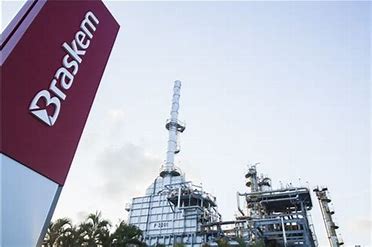In addition to logistics costs, exporters are impacted by the high volatility of the foreign exchange rate, the growth of global trade barriers and the “Brazil cost”
10/17/2022
The rise in fuel prices and the disruption of global transport chains have put the price of international freight at the top of the problems faced by Brazilian exporters. This is what shows the survey conducted by the National Confederation of Industry (CNI), still unpublished, seen by Valor. In addition to logistics costs, exporters are impacted by the high volatility of the foreign exchange rate, the growth of global trade barriers and the “Brazil cost.”
/i.s3.glbimg.com/v1/AUTH_37554604729d4b2f9f3eb9ad8a691345/internal_photos/bs/2022/q/X/B5JRwvRUKgoaqfio38vw/27emp-300-abimaq-b4-img01.jpg)
Jose Velloso — Foto: Leo Pinheiro/Valor
“The purpose of the survey was to have a snapshot of the complaints of Brazilian exporters,” said Constanza Negri Biasutti, CNI’s trade policy manager. “We understand that it should be the main base for trade policy strategies from now on.”
The survey was answered by almost 600 exporters of all sizes, which evaluated 43 different obstacles.
Logistics had already been pointed out as a critical point in the most recent edition of the survey, 2018, but the problem became much worse with the pandemic, said José Velloso, head of the Brazilian Machinery Builders’ Association (Abimaq).
Even as the most acute phase of the pandemic has passed, the maritime routes are still disorganized and there is a lack of containers, said Luis Rua, the director of markets of the Brazilian Association of Animal Protein (ABPA).
Before the pandemic, 80% of the ships arrived at Brazilian ports in the estimated time, he said. Today, only 30% manage to do so. This impacts land logistics and document flow, with increased costs. In addition, the delay in shipment may lead to the collection of fees by the ships for the delay.
The cost of international freight and the lack of containers are also pointed out as an obstacle by the Brazilian Association of the Cosmetic, Toiletry and Fragrance Industry (Abihpec). The CNI survey indicated results for the sector convergent with the nationwide snapshot.
The Economy Ministry informed that the international freight cost was $1,500 in May 2020, then peaked at $11,100 in September 2021. In the first week of this month, it was at $3,700. The values refer to the transport of a 40-foot container considering the Freightos Baltic Index (FBX), the industry’s benchmark.
The hikes are explained by the higher demand after restrictive measures to locomotion, increase in fuel prices, and reduction in the transport offer. The recent drop is related to lower fuel prices and reduced global demand for goods.
The logistics costs occupy four positions among the five biggest problems pointed out by Brazilian exporters in the survey. The second most cited problem is the high tariffs charged by the ports.
This complaint is related to the charge of cargo screening fees by ports, said Ms. Negri. Since 2016, CNI has been discussing the illegality and abusiveness of this fee at the National Agency for Waterway Transport (Antaq). CNI alleges that the task should be performed exclusively by the Secretariat of Federal Revenue. There is, however, a double screening.
The cost of domestic transportation is the third most pointed out problem in the survey. Mr. Velloso believes that infrastructure concessions, which have gained momentum since the Temer administration, are in the right path. However, it will still take time before domestic transportation problems stop being a factor in the loss of competitiveness of Brazilian products.
“These obstacles pointed out as the main ones shed more light on the need for Brazil to attack this logistics and foreign trade agenda,” Ms. Negri said.
Improving this point would support gains in other fields showed by the survey – such as the time spent on customs clearance, shortened with the implementation of the Single Foreign Trade website. Customs bureaucracy, indicated as a critical obstacle by 39.56% of the companies in 2018, was now listed by 21.9% of them.
The main exporter of products from the manufacturing industry, the machinery and equipment sector highlights the so-called Brazil cost, said Mr. Velloso. For example: imported inputs are about 20% to 30% more expensive than in other countries because of customs clearance costs, import taxes and the foreign exchange rate.
Several tax rules, complex and interpreted in different ways by government agents, are also the target of exporters’ complaints. According to Mr. Velloso, Brazilian products are exported with nearly 7% of their value in taxes that should, but were not eliminated along the production chain.
In his view, the three main steps to be taken by the next administration should be: approve a tax overhaul (more specifically, the proposal to amend the Constitution 110, which is pending only the approval by the Senate) and the restoration of the insurance instruments and export credit.
The Economy Ministry says that it has taken measures to soften the impact of higher commodity prices and transportation costs. It cites the 20% reduction in import tax rates for almost 90% of products. In addition, the rate of the Freight Additional for Renewal of the Merchant Marine was cut to 8% from 25%. A third initiative was the exclusion of the terminal handling charge from the calculation basis of the import tax.
Increasingly present in the national production chain, the import of services was included in the drawback regime. Thus, the collection of taxes will be suspended for services used in the production of items for the foreign market.
The ministry also highlighted the Single Foreign Trade website, with which the average time spent by a company to import fell to nine days from 17. At the current stage, this tool can be used for about 30% of foreign purchases.
The website also reduced the clearance time for exports to less than five days from 13. According to the ministry’s calculations, the savings with less delay reach $30 billion a year.
*By Lu Aiko Otta — Brasília
Source: Valor International

/i.s3.glbimg.com/v1/AUTH_37554604729d4b2f9f3eb9ad8a691345/internal_photos/bs/2022/M/r/R0pjTATJCiKlrA2bHBjg/14agr-300-boher-b10-img01.jpg)
/i.s3.glbimg.com/v1/AUTH_37554604729d4b2f9f3eb9ad8a691345/internal_photos/bs/2022/2/B/b5XmeNTPKG00Nn0htteQ/14fin-100-vale-c6-img01.jpg)
/i.s3.glbimg.com/v1/AUTH_37554604729d4b2f9f3eb9ad8a691345/internal_photos/bs/2022/w/M/BuCRITTiyxVtpAw5fI5Q/14emp-100-apple-b7-img01.jpg)
/i.s3.glbimg.com/v1/AUTH_37554604729d4b2f9f3eb9ad8a691345/internal_photos/bs/2022/i/H/5881eUThGJnrro1YVKeA/14agr-100-floresta-b10-img01.jpg)
/i.s3.glbimg.com/v1/AUTH_37554604729d4b2f9f3eb9ad8a691345/internal_photos/bs/2022/h/W/k9VA93RYKuBHrFtvFATA/24bra-100-bmacro-a4-img02.jpg)



/i.s3.glbimg.com/v1/AUTH_37554604729d4b2f9f3eb9ad8a691345/internal_photos/bs/2021/b/B/BNE4NpQIqvxfSq57ZbAA/22emp-100-bala-b1-img01.jpg)